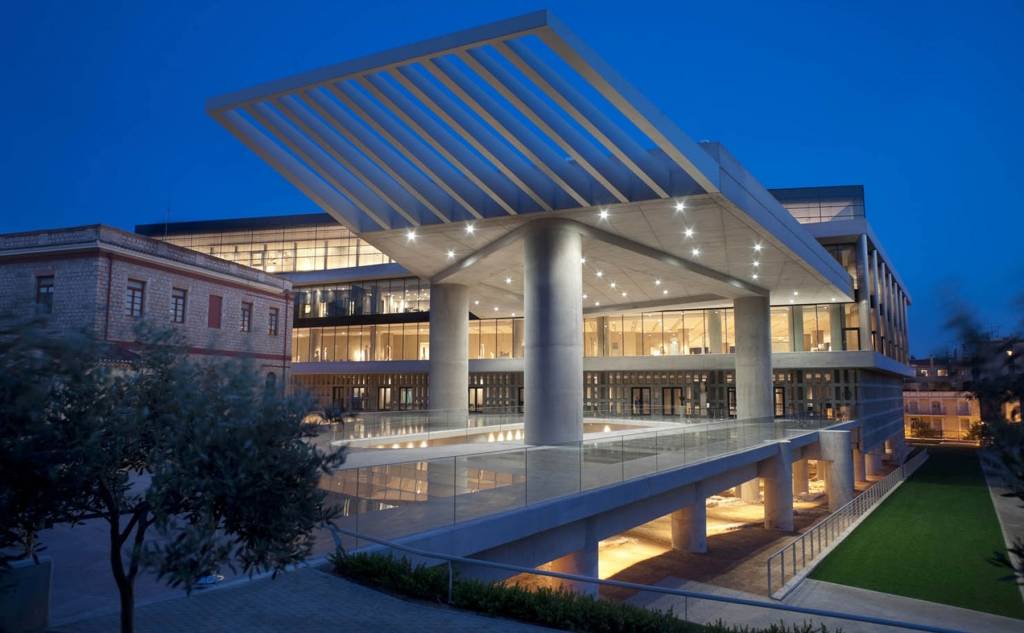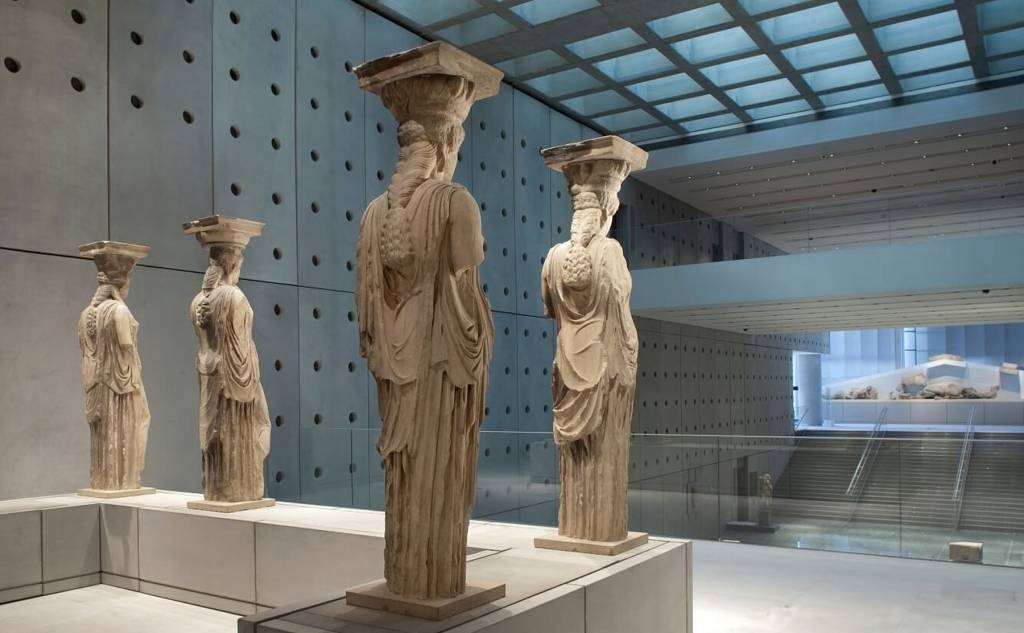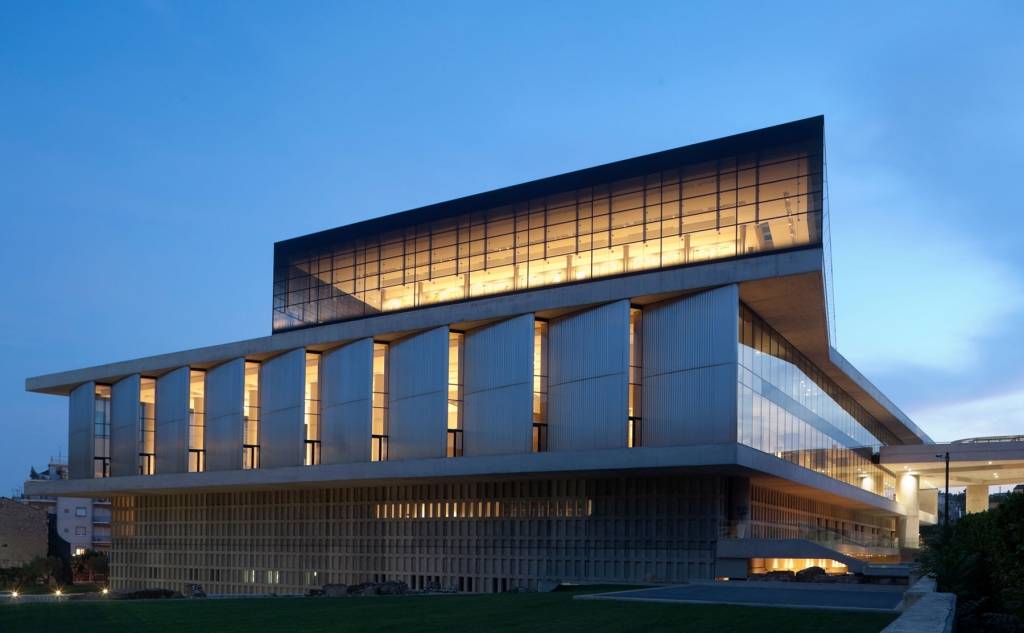The Acropolis Museum
The Acropolis Museum is located on the plot of the former Makrygiannis camp, at a direct distance of 280 metres from the Parthenon and was created to house the findings of the sacred rock of the Acropolis and its subterranes. The objects of the archaeological museum cover a broad period of time from the Mycenaean era to Roman and Early Christian Athens.
The first museum for the findings of the Acropolis was founded in the southeast of the Parthenon, according to the plans of architect Panagis Kalkos. During the excavations (1885-1890), the sculptures that the Persians had destroyed during the second Persian invasion of Greece came to light. In the same period (1888), an even smaller building was constructed where the less important antiquities were placed.
Many exhibits were stored in the National Archaeological Museum's basements and the neighbouring hills' caves during the Second World War. However, they were returned to the museum after the end of the war.
The new building of the Acropolis Museum was founded in 2003 and opened to the public on July 21st, 2009. The museum (with a total area of 25,000 m2) is structured around a concrete core with the exact dimensions of the Parthenon frieze. The floors are transparent in several places, inside and outside the building, allowing visitors to see the Athenian district's underlying antiquities. For several years, the president of the museum organisation was the late honorary professor of Archeology at Aristotle University, Dimitrios Pantermalis, who passed away in September 2022.
The collections of the Acropolis Museum are exhibited on four levels, while a fifth one houses the additional spaces (hall of officials, shop, restaurant). There is also a 200-seat auditorium, a periodical exhibition hall, and a virtual reality room. Specifically, the exhibition units are developed at the following levels:
- On the ground floor, findings from the sanctuaries and the settlement that developed on the slopes of the Acropolis in all historical periods are presented.
- On the first floor, in a circular path, almost the entire history of the top of the sacred rock unfolds, from the 2nd millennium BC. until the end of antiquity.
- On the third floor, the sculptural decoration of the Parthenon is developed.
It is worth mentioning that in November 2010, in a competition of the Association of Travel Journalists of Great Britain, the Acropolis Museum was voted the "Best Museum in the world", while in May 2013, the British newspaper "Sunday Times" ranked the Acropolis Museum in third place, in the relevant list of the 50 best museums in the world.







